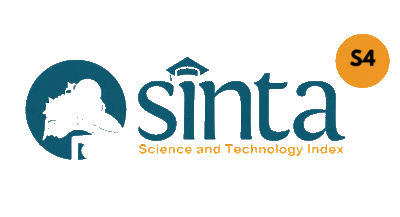ARIMA (AUTOREGRESSIVE INTEGRATED MOVING AVERAGE) SEBAGAI ALGORITMA PREDIKSI TINGKAT PEMBATALAN HEREGISTRASI MAHASISWA BARU DI UNIVERSITAS X
DOI:
https://doi.org/10.47111/jti.v18i2.14913Keywords:
ARIMA, semma, Prediction, student enroll, Time seriesAbstract
The digitalization era has transformed education, impacting new student admissions in Indonesia, which has various universities: State, Official, Religious, and Private. These universities share common procedures for admitting new students: file selection, test selection, and re-registration. However, many new students cancel their re-registration due to financial constraints, distance, or choosing another campus. Some students neglect the re-registration process until the deadline passes, affecting the accreditation of study programs and the reputation of the campus. To address this issue, a prediction model for re-registration cancellation rates can evaluate campus performance in attracting new students. The ARIMA algorithm (AutoRegressive Integrated Moving Average) is proposed as a suitable prediction model for time series data. This model can help universities identify and address factors leading to re-registration cancellations, thereby improving their performance and reputation. Using the SEMMA (Sample, Explore, Modify, Model, Assess) data mining methodology, the research produced an evaluation matrix with RMSE (Root Mean Square Error) values for various features: "non_registered" (145.77), "parents_income" (0.84), "parents_job" (4.07), and "entrance" (0.16). Additionally, the correlation matrix revealed two variables with a high influence on the target: "entrance" (0.85) and "parents_income" (0.68).
Downloads
References
S. Wulandari and I. V. Bangun, “Isu Utama Perguruan Tinggi Swasta,” Kesejaht. Rakyat Budg. Issue Br., vol. 01, no. 16, pp. 1–2, 2021, [Online]. Available: https://binus.ac.id/character-building/2020/05/kesejahteraan-rakyat/
P. Reji, R. U. Fajri, and N. S. Puspita, “Klasifikasi Daftar Ulang Calon Mahasiswa Baru Dengan Menggunakan Metode Klasifikasi Naive Bayes,” INDEX (Informatics Digit. Expert., vol. 4, no. 2, pp. 70–74, 2022, [Online]. Available: https://e-journal.unper.ac.id/index.php/informatics
N. H. Harani and C. Prianto, “Penerapan Algoritma Adaboost Guna Menentukan Pola Masukanya Calon Mahasiswa,” J. Transform., vol. 18, no. 1, p. 123, 2020, doi: 10.26623/transformatika.v18i1.1606.
D. R. H. Roosaputri and C. Dewi, “Perbandingan Algoritma ARIMA, Prophet, dan LSTM dalam Prediksi Penjualan Tiket Wisata Taman Hiburan (Studi Kasus: Saloka Theme Park),” J. Penerapan Sist. Infomatika (Komputer Manajemen), vol. 4, no. 3, pp. 507–517, 2023.
B. yafitra Pandji, Indwiarti, and A. A. Rohmawati, “Perbandingan Prediksi Harga Saham Dengan Model Arima Dan Artificial Neural Network,” Ind. Comput., vol. 4, no. 2, pp. 189–198, 2019, doi: 10.21108/indojc.2019.4.2.344.
J. Soeryawinata, H. N. Palit, and L. W. Santoso, “Sales Forecasting pada Dealer Motor X Dengan LSTM, ARIMA dan Holt-Winters Exponential Smoothing,” J. Infra, vol. 10, no. 2, pp. 1–4, 2022.
E. I. Sihombing, C. D. Suhendra, and L. F. Marini, “Analisis Data Time Series Untuk Prediksi Harga Komoditas Pangan Menggunakan Autoregressive Integrated Moving Average,” vol. 4, no. 6, pp. 2711–2720, 2024, doi: 10.30865/klik.v4i6.1863.
R. J. Hyndman and G. Athanasopoulos, Forecasting: Principles and Practice, 2nd ed., vol. 19, no. 4. Monash: Otexts, 2018. doi: 10.2307/1054108.












